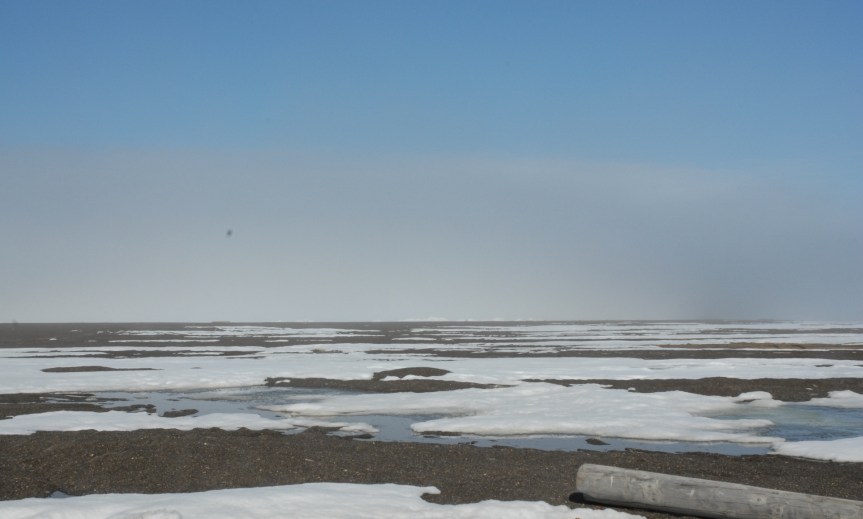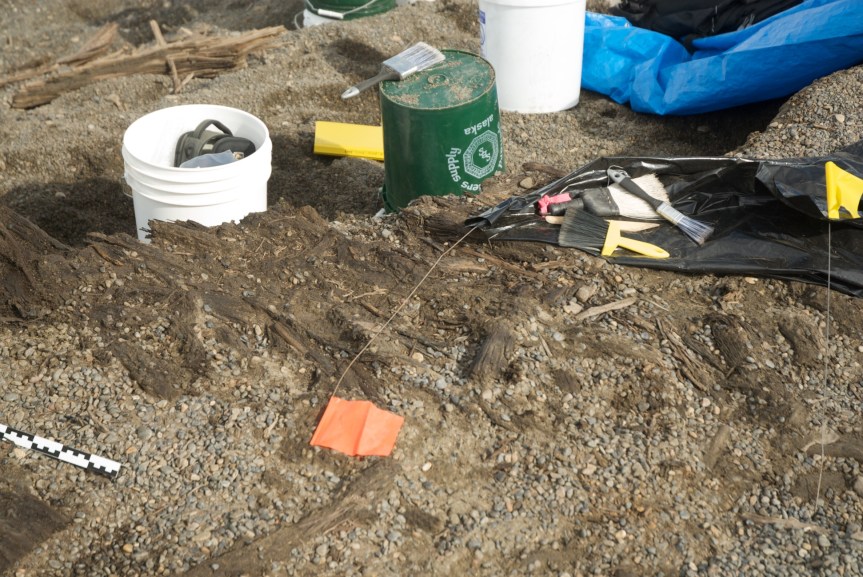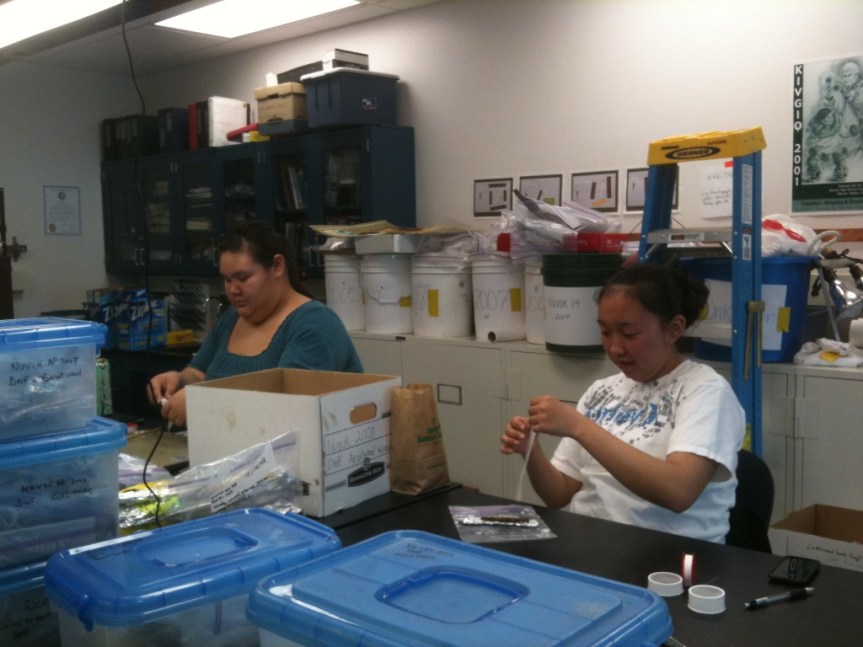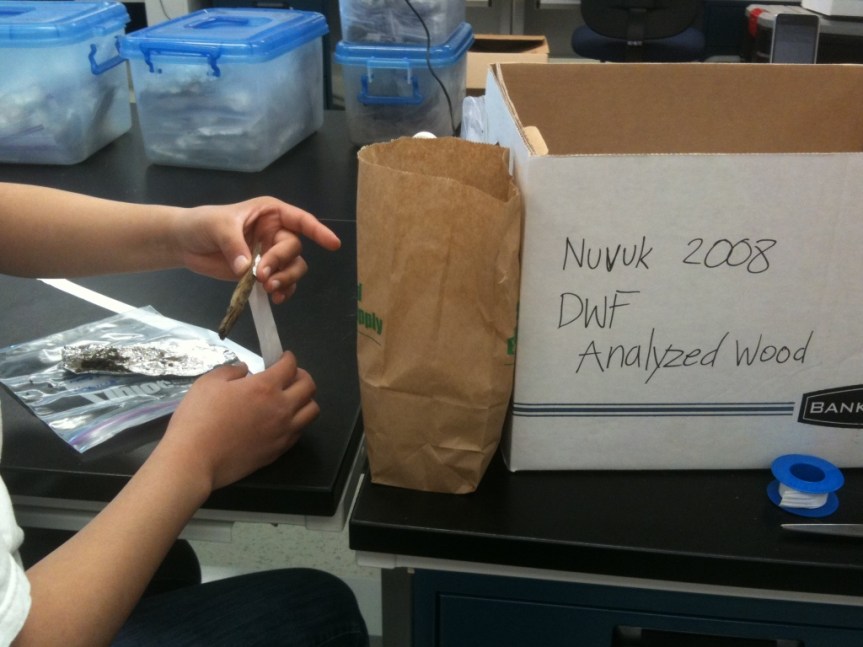That’s it. It’s snowing.
Month: May 2011
The snow is finally melting!!
We had a serious amount of snow last winter, although I’m not sure if it was an all-time record or not. By a couple of weeks ago I was beginning to get a bit worried. We’ve started work at Nuvuk in June some years ago, but it was pretty miserable. We’re starting in early July this year, but at the rate the snow was melting it was looking as if we might still have snow patches on the ground when we started.
However, we’ve had some warm sunny weather the last couple of weeks, and the snow is melting. Patches of tundra are starting to show through; people are heading inland after geese. We drove out to the end of the road to take a look at Point Barrow. I was happy to see lots of gravel showing. Once the gravel starts to appear, it absorbs lots of heat, and the snow melts faster. Given another month, we should be in good shape.

It was misty when we drove out, but I think it was a mist from snow ablating (going from solid to vapor directly). It happens here a lot on warm days, resulting in mist rising from the ground as well as from puddles & ponds.
List of Archaeology Journals | Doug’s Archaeology
A very handy list of Open Access and other Journals:
List of Archaeology Journals | Doug’s Archaeology.
Thanks, Doug!
Working on Wood (as opposed to woodworking)
Claire Alix, who is probably the world expert on precontact wood use in Alaska, is in Barrow for a 10-day stint of analyzing wood from Nuvuk. She is working on wood from the Driftwood Feature (DWF), because there is so much of it and we need to figure out what needs to be kept.
The DWF was a storm strand line which was washed up onto and mixed with an Ipiutak settlement. Not just any Ipiutak settlement, but the farthest north Ipiutak settlement by about 500 km. The result was a mass of wood, bark and marine invertebrates, with a number of clearly identifiable artifacts included. There was so much wood that we called the level “Wood/Sand/Gravel” because it seemed like there was more wood than matrix. However, some of the smaller pieces of wood and bark were also worked, but it seems that the storm picked up smaller floatable artifacts and mixed them with driftwood. Given the field situation, it was impossible to examine each small piece of wood in detail, so we erred on the side of caution and brought back a lot of things that probably aren’t artifacts, so they could be examined in a nice warm lab.


The DWF was actually frozen, and had been for centuries, so we didn’t just want to bring the wood into a warm lab and let it thaw. That generally leads to wood that looked really well-preserved “exploding.” We have a nice walk-in refrigerator at the Barrow Arctic Research Center (BARC) just down the hall from my lab, so we have been holding the wood there, thawing slowly and keeping it cool to retard mold growth. The large and important artifacts started the conservation process very quickly, but there are boxes of smaller things which need to be inspected to separate the worked wood and bark from the rest. The wood that is just driftwood will be lab discarded, with that being recorded in the catalog so it will be clear in the future that artifacts haven’t been lost. The artifacts will get analyzed and better information will be recorded. This also lets us identify things for the conservator to work on when she next can come to Barrow. Small artifacts are being brought out for gradual drying. Wrapping wood in teflon tape to hold it together during slow drying has worked fairly well, so we’re doing that to move more out of the walk-in
All this is pretty laborious. Claire has to do the analysis and wood IDs, but with her schedule we needed to find a way to speed things up. The initial sorting of bags of wood and the wrapping of the wood are two of the most time-consuming aspects of the process. So, last week Heather Hopson came in to do some data entry and initial sorting, and this week Trina Brower is joining Heather. They are doing the initial sorts, wrapping with Teflon tape & data entry, so Claire can keep looking at wood.

Wrapping the delicate pieces of small wood is definitely fiddly work. It certainly helps having someone to work with & talk to while working.

And when all else fails….

Last sunset until August
Tomorrow, May 11, the sun will set at 2:08 AM and rise 21 minutes later. It won’t set again until early August.
This does not mean that there aren’t many inches of snow still on the ground, however…
